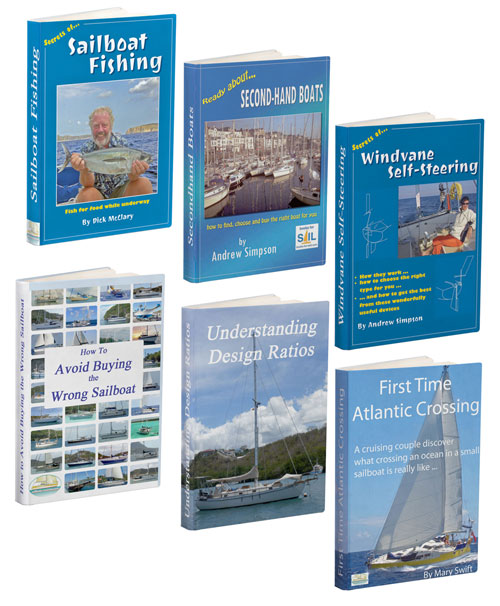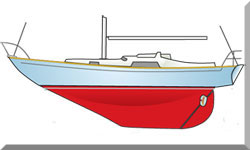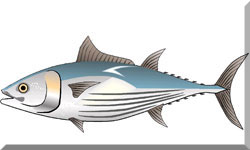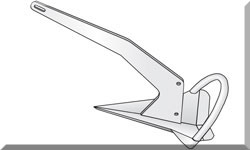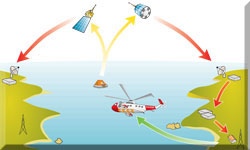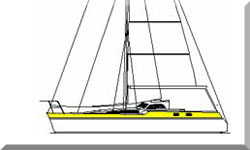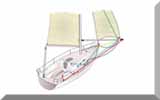- Home
- Offshore Seamanship and Heavy Weather Tactics
Mastering Offshore Seamanship & Safety: Protocols, Heavy Weather & Crew Tactics
In a Nutshell...
The sea is utterly indifferent to your plans, and once you are beyond the continental shelf, you are solely responsible for your fate. The ultimate measure of a sailor is not the boat they choose, but the protocols they follow and the judgement they apply when the weather turns bad or the situation degrades. This pillar focuses on the high-stakes, tactical reality of offshore life—the human element, the safety gear that saves lives, and the essential heavy weather tactics that will see your vessel safely through a gale. Your mastery of seamanship, not your bank balance, is your greatest safety tool.
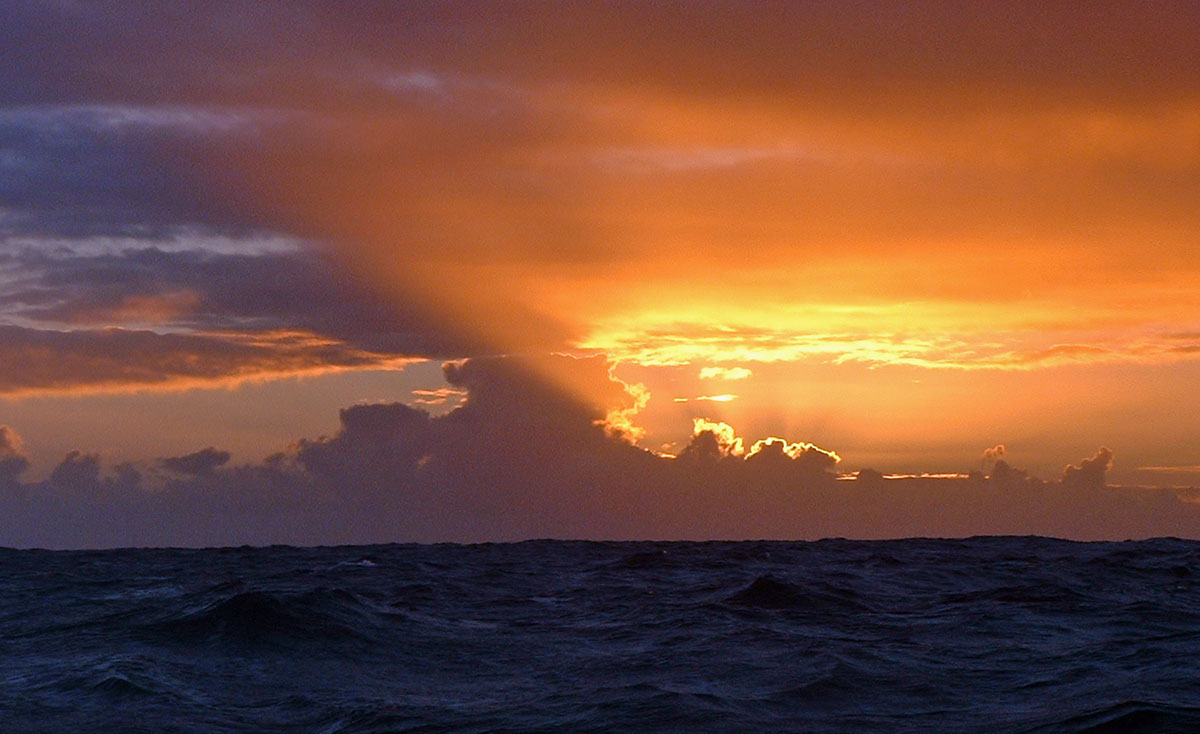 The beginning of another mid-Atlantic day
The beginning of another mid-Atlantic dayTable of Contents
The Crew Factor: Vigilance & Watchkeeping
The single most common point of failure on a long passage is fatigue. It is insidious, cumulative, and compromises every decision you make. Addressing fatigue is not a matter of comfort; it is a fundamental safety protocol.
Managing the Sleep Debt
A rigid, fair watch system is your strongest defence against this fatigue. An informal rota, where everyone just "helps out," is a disaster waiting to happen. The watch schedule must be treated as a system that, when broken, requires immediate repair. Even on a boat with just two crew, you need a system that guarantees adequate, structured rest. This means designing the rota not just for the hours you are awake, but for the quality of sleep you can achieve on a constantly moving vessel.
We have detailed the most effective and safe way to structure rest and vigilance for any crew size in: Optimal Watch Keeping Systems: Rotas for Rest, Safety & Vigilance on Passage.
The Unique Strain of Solo Sailing
If you choose to sail alone, the stakes are ratcheted up exponentially. All watchkeeping, maintenance, and emergency protocols fall to one person, and the psychological burden is immense. The challenge of a lone passage is managing the sleep debt and the resulting cognitive decline—you will experience impaired judgement, memory failure, and mood shifts. This is where advanced systems and pre-emptive sleep management become non-negotiable.
Before undertaking a solo passage, you must first assess the reality of the risks and rewards. Read our essential guide: Single Handed Sailing: Assessing the Risks and Rewards of Solo Passage Making.
Heavy Weather & Advanced Safety Protocols
Good sailors don't avoid heavy weather; they prepare for it and know how to deal with it. The first rule of a gale is to reef early—not when you are struggling, but when you first realise it might become a struggle.
The Lessons of Complacency
The most dangerous moments are not the storm's peak, but the slow, insidious errors born from the monotony of passage-making. The human mind is wired to normalise risk. You cannot afford to; the ocean has no mercy for oversight.
For a candid, unvarnished look at the mental toll and physical risk of long passages, and how your attitude is the ultimate safety gear, read: Beyond the Dream: The Unvarnished Reality of Sailing the Ocean. The cost of letting down your guard is illustrated starkly in: The Hard Lesson in Complacency: What the Skipper of Alacazam Learned.
Tactics for Riding Out the Storm
When the wind is screaming and the sea is confused, you must know your options beyond simply running with it.
- Heaving-to: This is the elegant art of finding the boat's sweet spot—a state of relative rest achieved by backing the jib and lashing the helm to leeward. The boat stalls, drifting slowly, while presenting its most robust flank to the waves.
- The Drogue vs. Sea Anchor: These are not interchangeable. A sea anchor is deployed off the bow to hold the boat into the waves, severely limiting drift. A drogue is deployed off the stern to slow the boat's speed when running before a sea, helping you avoid surfing uncontrollably down the face of a wave and broaching.
Understanding when to push your boat for distance and when to ease up for safety is the definition of good seamanship. Learn how to balance these factors in Balancing Speed & Safety: The Essentials of Performance Cruising.
Steering & Tactical Gear
Steering is the most continuous task on a long passage. You need systems that are reliable, redundant, and can cope with the reality of an unpredictable sea.
Self-Steering Philosophy: Redundancy is Key
Never rely on a single system. The choice between a wind vane and an electronic autopilot is about more than cost; it's about power consumption and reliability. The mechanical elegance of a well-balanced wind vane, which uses only the power of the apparent wind to hold a course, offers the most robust form of self-steering, especially on a long, low-power tradewinds run. The electronic system, while offering superior responsiveness and power in heavy steering, is only as good as your battery bank.
For a full, expert comparison of the capabilities, power needs, and real-world performance of both systems, consult: Self-Steering on Passage: Guide to Wind Vanes & Electronic Autopilots.
Optimising Your Course and Comfort
Sailing a long passage is not about chasing every tenth of a knot; it is about finding the course that is sustainable, comfortable, and safe. That means knowing how to use the waves to your advantage and how to trim your sails to dampen the relentless rolling motion, particularly when running downwind.
To master the day-to-day tactical decisions that transform a difficult passage into an enjoyable one, review: Sailing the Tradewinds: Essential Tips for Optimising Route & Comfort.
Personal Safety & Offshore Kit
Safety at sea starts with the gear you wear and the procedures you follow every time you step into the cockpit.
The Offshore Wardrobe
Your foul weather gear is an investment in your safety and endurance. It must keep you warm and dry not for an afternoon rain shower, but for days of cold spray and driving rain. More critical than the jacket itself is the integrated safety harness and the routine of wearing it.
Protocols and Courtesy: The Mark of a Pro
Good seamanship extends beyond survival tactics; it includes respect for the community and international protocols. Flying flags correctly is not mere tradition; it is a sign of a professional mariner who respects maritime law and courtesy.
Ensure you adhere to all necessary rules with our comprehensive guide Sailboat Flag Etiquette: A Definitive Guide to International & Courtesy Flags.
Routine, Morale & The Daily Rhythm
The best seamanship practice is establishing a routine that nurtures the crew's physical and mental health. A happy ship is a safe ship.
The Morale Booster
After days of dried provisions, there is nothing that elevates crew morale like the arrival of fresh protein. Offshore fishing isn't just a hobby; it’s a psychological boost that connects the crew back to the sea's abundance. It provides a welcome break from the monotony of watch, a new task, and a fantastic meal.
Learn simple, effective ways to secure dinner from the ocean in: Offshore Fishing: Simple & Effective Handline Tips for Fresh Protein at Sea.
The Rewards of Vigilance
The daily rhythm of the sea—the changing light, the constant motion, the simple tasks—can be interrupted by moments of profound awe. Spotting a pod of dolphins, a migrating whale, or being shadowed by an albatross are the rewards for the hard, repetitive work of vigilance. These encounters remind you why you put to sea in the first place.
We have chronicled some of these moments in: Seabirds & Wildlife Encounters: An Ocean Sailor's Story of the Brown Booby.
This article was written by Dick McClary, RYA Yachtmaster and author of the RYA publications 'Offshore Sailing' and 'Fishing Afloat', member of The Yachting Journalists Association (YJA), and erstwhile member of the Ocean Cruising Club (OCC).
Frequently Asked Questions
1. What is the single biggest cause of maritime accidents on long passages?
1. What is the single biggest cause of maritime accidents on long passages?
Fatigue leading to poor judgment. This is closely followed by complacency (failing to wear a harness in moderate conditions) and fire. All three are preventable through strict adherence to watch protocols, safety procedures, and regular system checks.
2. Is it safe to heave-to in a full gale?
2. Is it safe to heave-to in a full gale?
In a robust, well-found cruising yacht, yes, heaving-to is often the safest tactical choice when conditions become too severe to sail or run. It effectively puts the boat into a controlled, survivable stall, minimising the stress on the rigging and the crew.
3. What is the most critical item of personal safety gear?
3. What is the most critical item of personal safety gear?
While the life raft and EPIRB are critical, the most frequently used and life-saving item is a safety harness and tether, combined with the unbending discipline to always wear it when working on deck, especially at night or in rough conditions. Falling overboard, particularly when short-handed, is almost always fatal.
4. How do you combat the constant rolling when running downwind?
4. How do you combat the constant rolling when running downwind?
The constant roll is mentally and physically exhausting. Tactics include: setting twin headsails with the main stowed (or reduced to a tiny balance patch), using an anti-roll passive paravane, and ensuring all non-essential crew sleep on the saloon floor, wedged off the centreline.
5. What are the psychological challenges of long-term isolation at sea?
5. What are the psychological challenges of long-term isolation at sea?
The main challenges are mood fluctuation, acute boredom, and the cognitive effects of chronic sleep deprivation (leading to poor memory and decision-making). Maintaining a rigid schedule, engaging in tasks like fishing, and having a reliable communication link for morale are essential coping mechanisms.
Recent Articles
-
Modern Boat Electronics and the Latest Marine Instruments
Dec 20, 25 05:27 PM
Should sailboat instruments be linked to the latest boat electronics as a fully integrated system, or is it best to leave them as independent units? -
Hans Christian 43: Classic Bluewater Cruiser & Liveaboard Sailboat
Dec 10, 25 04:37 AM
Explore the Hans Christian 43: a legendary heavy-displacement, long-keel sailboat. Read our in-depth review of its specs, design ratios, and suitability for offshore cruising and living aboard. -
Planning Your Sailboat Liveaboard Lifestyle: An Ocean Sailor's Guide
Dec 06, 25 05:18 AM
Seasoned sailors share their methodical risk analysis for planning a secure Sailboat Liveaboard Lifestyle, covering financial, property, and relationship risks.
